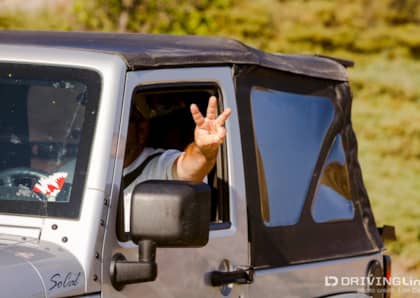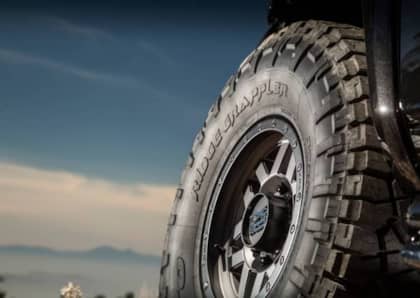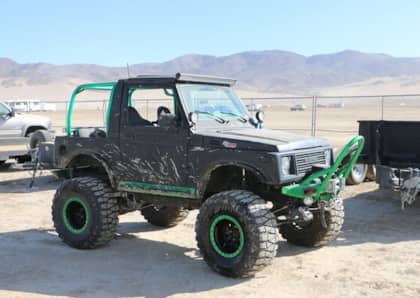10 Common 4x4 Builder Mistakes (& How to Avoid Them)
The biggest difference between a mall crawler and dedicated off-road rig isn’t in how it looks, but more typically, how it’s built. It’s all in the details. Understanding the difference between a “lift kit” and performance suspension system, outfitting your rig with proper traction aids and picking the right tire for the job are all part of the builder equation. While style can be subjective, there are definitely right and wrong ways to build a trail-worthy 4x4.

To better help keep your build on track, we’ve put together a list of the 10 most common builder mistakes and how to avoid them.
1. Big Tires, Little Axles

An aggressive set of oversized treads is a great way to help your 4x4 get farther down the trail. The added ground clearance, along with a larger footprint, can do wonders in the dirt. But don’t over-tire your drivetrain. There isn’t a steadfast rule for this as there are dozens of factors to consider (vehicle, suspension and axle type being among some of the most important).
Research is your friend. Just because you can run a 40-inch-tall tire, doesn’t mean your axle can handle the added mass. You’ll have more fun and go farther on a smaller and more aggressive tire over one that’s simply too much for your drivetrain to handle.
2. Differential Gearing

Now that you’ve decided on a more fitting tire set, you’ll want to invest in a numerically higher differential gear ratio. Sure, your truck might feel OK with the larger treads and stock gearing, but you’re only adding stress to the transmission and missing out on performance. Moving to a higher numerical gearset will ease the strain on your powertrain and get your rig working better on-road and off. Factors such as a manual or automatic transmission, engine type and tire size are all considerations when determining the best differential gear ratio for your 4x4.
3. Lockers Before Lightbars

We get it. Lightbars are in Vogue. But, they’re not going to be the reason you can drive farther down the trail at night. A set of differential lockers on the other hand will make sure that each tire is fighting for traction. If you can only afford to upgrade one axle at a time, we say go with a rear locker. For those daily driving their 4x4, a selectable locker, such as an ARB Air Locker, would be our first choice.
4. Get a Fire Extinguisher!

We’re amazed at how many rigs don’t have a single fire extinguisher inside. Most organized trail rides require at least one fire extinguisher per vehicle. A basic ABC extinguisher can be picked up from your local home improvement store. We like to carry two — one that’s in reach of the driver and one that’s easily accessible in the back of the vehicle.
5. Wired Up

Now that you have your fire extinguisher onboard, we can talk about one of the most common causes of vehicle fires: poorly routed and connected electrical wires. Spend the time to makes sure you’re properly connecting, routing and sealing your wires. If you’re planning on running a host of accessories that demand a lot from your electrical system, consider running a separate battery. Draining your battery can not only leave you stranded but also damage your vehicle’s expensive onboard computer.
6. Bump Who?

Bumpstops prevent your vehicle’s suspension from compressing beyond its intended design. Running without bumpstops can lead to damage to your rig’s suspension and/or drivetrain. Bumpstops are also a great way to moderate your suspension travel so you can run a larger tire with a low amount of lift. In addition, they can be the critical factor in preventing two components (such as a differential and oil pan) from colliding during up travel.
Most new suspension systems come with bumpstop brackets to work with your existing stops. The challenge many old vehicles encounter is that the OE bumpstops deteriorate over time. Companies such as Daystar and Energy Suspension are both excellent sources from OE replacement bumpstops.
7. The Right Rubber

As the only part that’s actually designed to touch the terra firma with frequency, your 4x4’s tires are critical to its performance on the trail. Since most people daily drive their four-wheel drives, there is often a misconception that you need some sort of all-season tire to retain good highway behavior. This just isn’t the case. With companies now offering more aggressive versions of all-terrains, such as the Nitto Ridge Grappler, you no longer have to sacrifice off-road performance in the name of on-road handling and tire longevity. It’s equally important to make sure you pair your tire with the correct load rating for your vehicle.
8. Suspension: Performance vs. Lift

There’s a significant difference between a performance suspension system and a basic lift kit. If all you are looking for is a little extra suspension height so you can raise the vehicle and clear a larger tire, then a basic “lift kit” is fine. The main differences between a basic lift and a performance suspension system have a lot to do with vertical wheel travel and the dampening properties of the shocks.
Performance suspension systems (sometimes labeled as long-travel suspensions) are designed to increase your suspension travel, so your tire stays in contact with the ground. Increased wheel travel, when paired with more dynamic shock absorbers, can equate to better vehicle control and ride on-road and off. Yes, most performance suspensions raise the vehicle as well, but that’s not the primary goal.
9. Sway the Right Way

From the factory, your 4x4 is equipped with either one or two sway bars. Most commonly, your rig will have at least one front sway bar. Do yourself a favor and buy a set of sway bar disconnects. Off-road, you want the suspension to cycle freely and by disconnecting the sway bar, it has a better chance of doing so. The goal is to keep your tires in contact with the ground at all times. Not every vehicle make will have a readily available sway bar disconnect. If that’s the case for your rig, simply learn how to remove the sway bar links or bar when you hit the trailhead.
10. Stop It Now!

Don’t overlook one of the most critical areas on your 4x4: the brakes. Adding on larger tires, bumpers and trail gear puts an added strain on your braking system. Big brake kits are not cheap, but they are well worth the money spent. Even a modest investment in a better set of brake pads, such as the ones offered from EBC, can make a noticeable difference.











